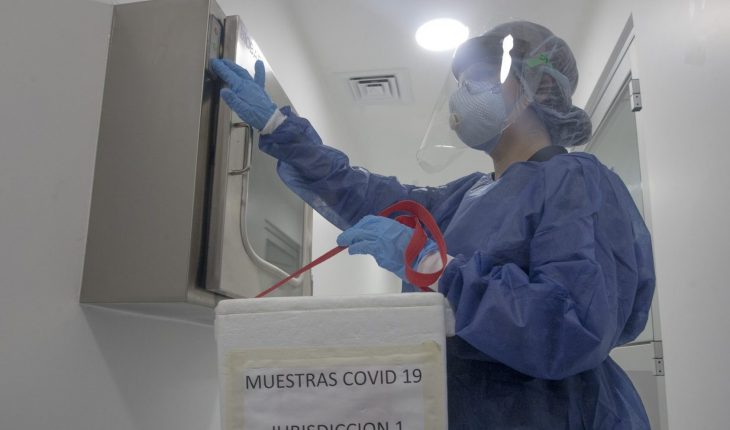Capital authorities announced a change in strategy to contain COVID-19 this week: to do more tests to identify positive cases and alert their contacts.
This is part of Mexico City’s plan to begin the transition from red light to orange and reopen a good part of the activities.
The head of government, Claudia Sheinbaum, says this change can be made because there are slight decreases in the percentage of hospitalization and the number of contagions.
This Friday, Eduardo Clark García, director general of the Digital Government of the Digital Agency explained that the growth of cases has slowed.
While there were up to 250 new cases in May daily, hospital admissions have dropped in the last five days, with a reduction of 25 people less daily
“It has been going down continuously since its peak growth that was in the last days of April and today we are at negative rates, what does it mean, that every day we see slightly fewer people in hospitals,” Said Clark Garcia.
He stressed that this reduction is in accordance with his epidemiological model.
“Right now we should see falls of around 25 to 30, so we’re very close, which is good news because it means we’re maintaining that growth for now yes – to see a little this downward curve to the right where we’re seeing fewer and fewer hospitalizations,” he added.
However, the Ministry of Health’s projections for Mexico City do not look so encouraging.
On Wednesday, during the daily conference, undersecretary of health Hugo López-Gatell acknowledged that there are an excess of projected cases of COVID-19 for the Valley region of Mexico, comprising the capital and the State of Mexico.
And that in this region intensive care hospitalizations still do not give clear signs of declining.
“Intensive therapy had a sustained period of increase, it went from the point of prediction, of the date, and it has remained, here it is already on a plateau with slight descent, still very light to be interpretable, but hopefully at the time it begins to descend, but definitely not exceeding the available occupation,” he said.
For this area it was projected that between 6 and 8 May would reach the maximum point of contagion, which did happen, however “the prediction was certainly exceeded because there is persistence, we have already been about 17, 18 days where the decline of the curve has stagnated”.
Although he said there was already a “descending pattern” he reiterated that he had slightly exceeded the prediction curve.
The NEW CDMX strategy
Lopez-Gatell had pointed out that doing many tests did not mean better monitoring of the pandemic, but on Wednesday he highlighted the capital’s new plan to detect new cases and control the pandemic.
Dr. Oliva López Arellano, Secretary of Health of Mexico City, said that testing “is one of the most comprehensive and timely responses we have seen by a federal entity in the face of an epidemic reality”.
It also helps with intensive case detection and tracking of your contacts.
The plan is to “improve identification by increasing the number of tests and thus “cutting the chain of contagions, isolating positive cases early, and detecting and isolating asymptomatic people. This is also important because a number of studies have shown that a very significant percentage, about 40 percent of cases, can be asymptomatic.”
López-Gattel called this plan “promising and relevant and so timely is because it has a very clear, very comprehensive technical logic”.
What we do in Animal Político requires professional journalists, teamwork, dialogue with readers and something very important: independence. You can help us keep going. Be part of the team.
Subscribe to Animal Politics, receive benefits and support free journalism #YoSoyAnimal.
translated from Spanish: Are the cases lowered or did the predictions go down?
June 13, 2020 |





